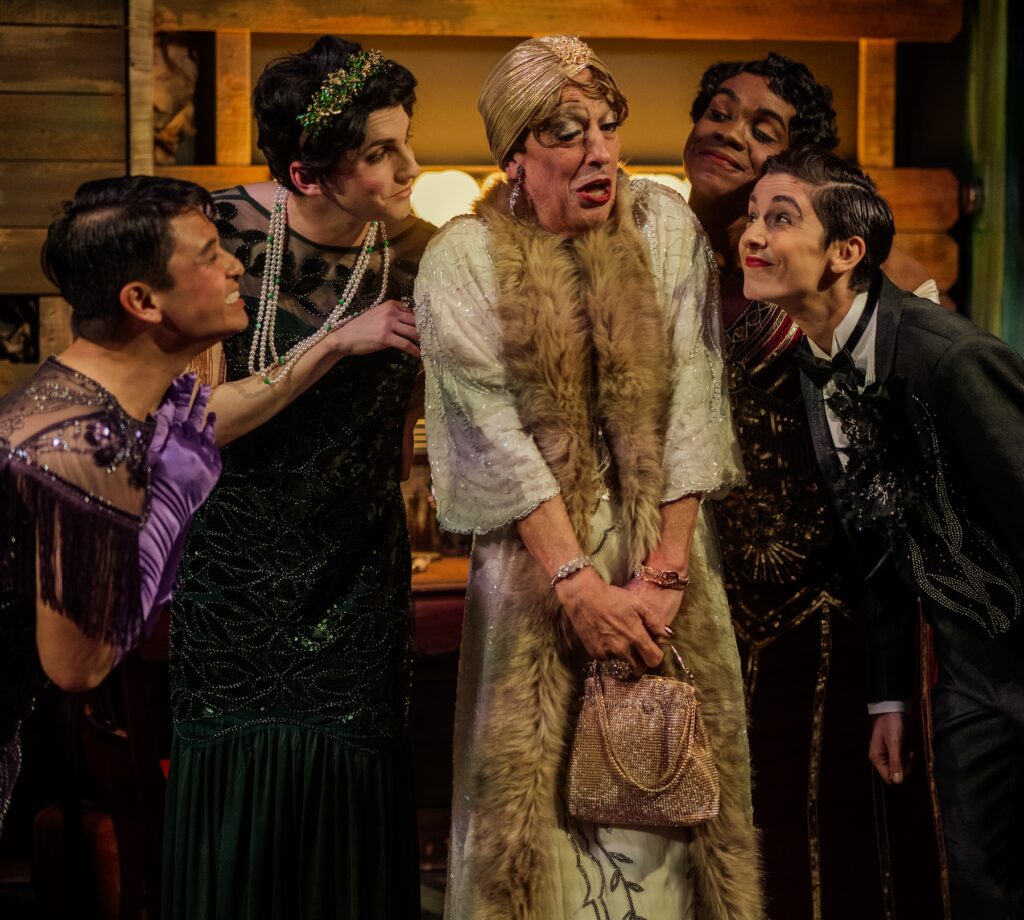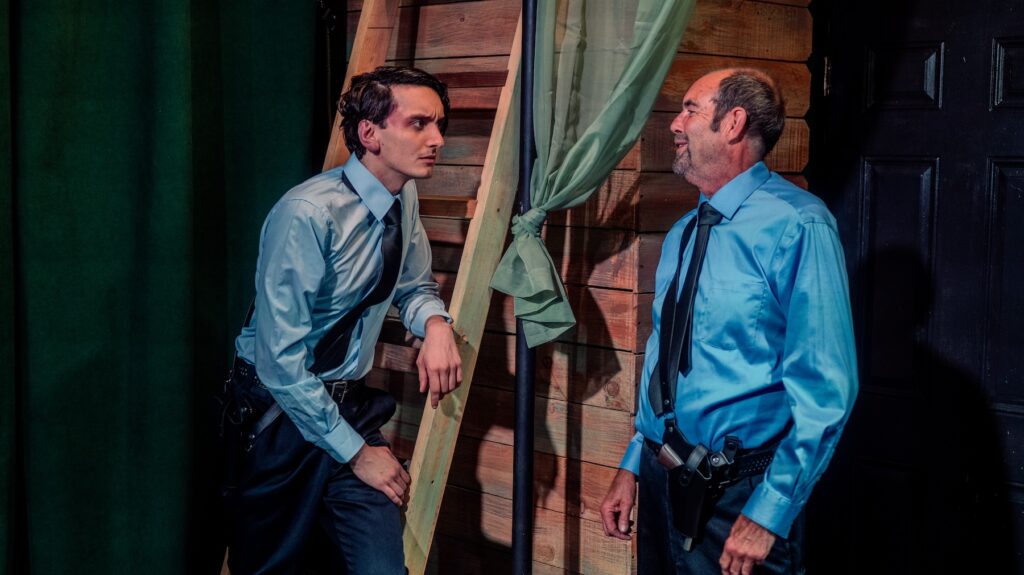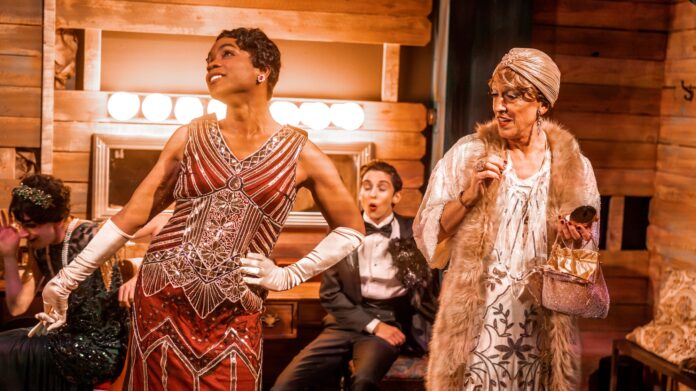I can honestly say that when I agreed to attend opening night of The Pride of Lions (world premiere through April 21 at Theatre Rhino, SF), I didn’t know that the next day would be Trans Day of Visibility, nor that both events would correspond with AsiaSF closing its doors. In that sense, the play’s opening couldn’t be more timely. Maybe it was fate?
The subject matter of Roger Mason’s new play is certainly in-line with the other events. Set in 1920s New York, the show follows drag performer Gracie (Brendan Looney) dreams of Broadway stardom as much as any admirer of The Great White Way. But drag is illegal in this era, so she and her contemporaries are relegated to dingy clubs. Yet, hope springs eternal with news that a major star’s new show needs real “female impersonators” in the chorus.
That leads Gracie and fellow performers—senior veteran Madam Red Hook (Michael DeMartini), long Black performer Molasses (Sean Prescott), Southern-born drag king Shasta (Frances Domingo), and pinoy babe-in-the-woods Marla (Patrick Chico)—to audition for a show for which they know they’ll be arrested after the final curtain. Complicating matters even more is the fact that Gracie has begun to fall for a closeted cop (Nic Moore) who, in all likelihood, will be called on to arrest the group.

Although the show runs two hours without intermission, it’s certainly worth noting that the play is stronger in its first half. Not only does it open with an intensely erotic hook-up between Gracie and closeted cop Hammer (shoutout to intimacy choreographer Maya Herbsman for once again ensuring the actors’ safety during such a realistic scene), but the aftermath of that is engrossing. Hammer’s foolish optimism leads him to believe he can affect change from within the system, even as he hypocritically chastises Gracie and the others to not make waves. Gracie’s escape from a fundamentalist Christian father is heartbreaking, even when told only in voiceover. And the backstage cattiness of the performers is hilarious to watch.
Where it begins to lose its way is after the show has taken place and the group gets arrested. There are some strong visuals—particularly the way director Ely “Sonny” Orquiza stages everyone forced to change out of their performance dresses into prison blues—and acknowledging the casual racism of the time works in the play’s favor. Yet, the second-half feels a little too self-aware of our hindsight of the era. It’s good that they don’t just present the racism without context (especially since Orquiza is the creator of the notorious “Living Document” about racism in Bay Area theatre), but it begins to feel more like an essay about discrimination than a dramatic work. As we get closer to the end, the play frequently stops in its tracks so that each character can have a monologue about their place in the world.
What’s more, the ending seems more like an attempt at shock value than an organic conclusion. Hammer’s sympathy with the performers is contrasted with the cartoonish bigotry of his superior officer, Gray (Kim Larsen). This leads all of the characters to a violent ending that feels wedged in rather something to which this was all leading. Given that the time in jail is spent with the characters arguing about whether things will ever change, ending on of those conversations would have both shortened the run time and provided a natural (and still sad) ending to the entire show.

Still, Orquiza and his collaborators’ greatest accomplishment is doing so much with the limited physical space of the Theatre Rhino basement. The sex scene at the start is pretty awkward because it forces the entire audience to rubber-neck to the left to see the action behind a sheer curtain, but that curtain is used to great effect later as the visualization of fantasies by Gracie and Hammer. And the ability to hide the upstage “backstage” make-up table is a testament to the work of scenic consultant Hector Zavala and lighting designer Andrew Schmedake. (And one would be remiss not to mention the fabulous costumes by Wendell C. Carmichael.)
And yes, Theatre Rhino now operates out of a basement. I wasn’t aware of that beforehand, having last seen one of their shows when they performed at the now-Gateway Theatre in the Embarcadero. I was one of two people masked in the cramped room, at least until one patron looked in my direction (possibly at my Aranet4) and then put on their mask earlier in the show. I don’t blame them: over the course of the intermission-free two-hour show, my little box took CO² readings of 5008ppm, which has to be the highest I’ve seen it go in the nearly-two-years I’ve owned it.
It was certainly the right time for me to see Pride of Lions, both in terms of my attendance and of its (sadly still-relevant) subject matter. Yet, this obvious passion project jumps the rails as it nears its final bow. It’s a good example of how much better and worse things have gotten over a century, but its final punctuation really needs some work.
THE PRIDE OF LIONS’ world premiere runs through April 21 at Theatre Rhinoceros, SF. Tickets and further info here.





